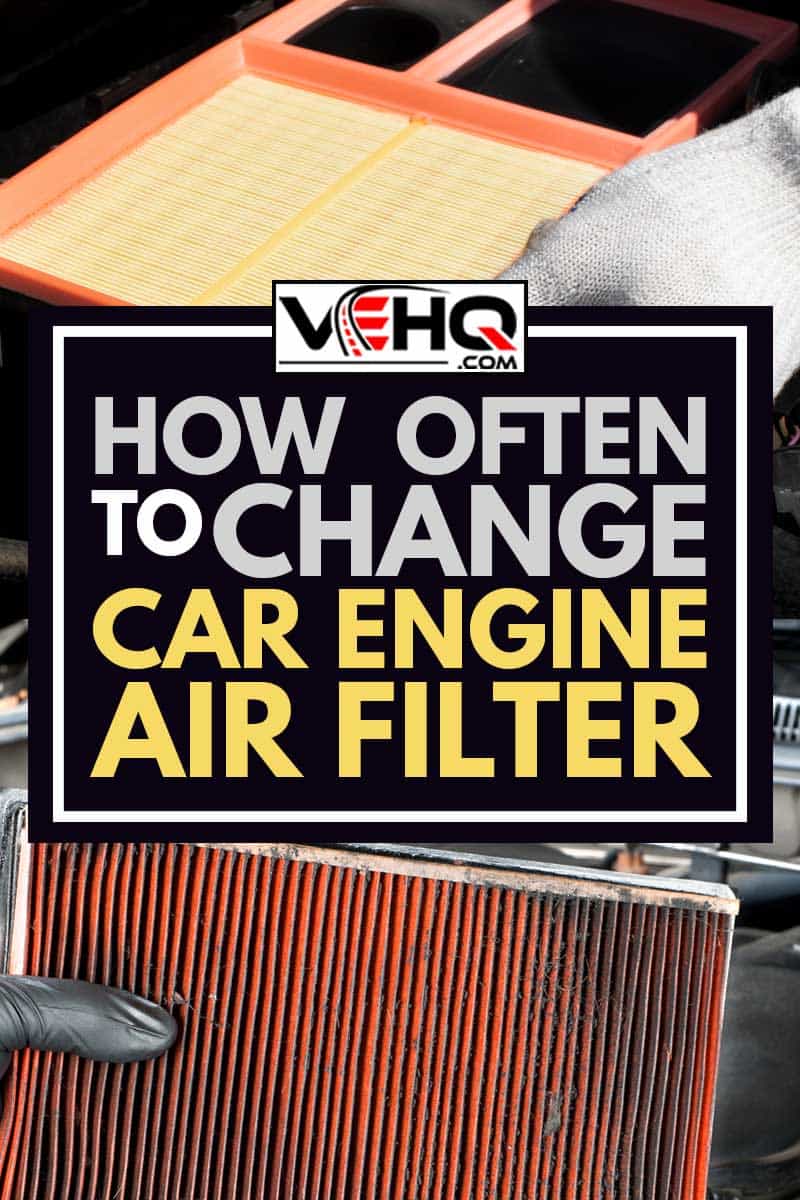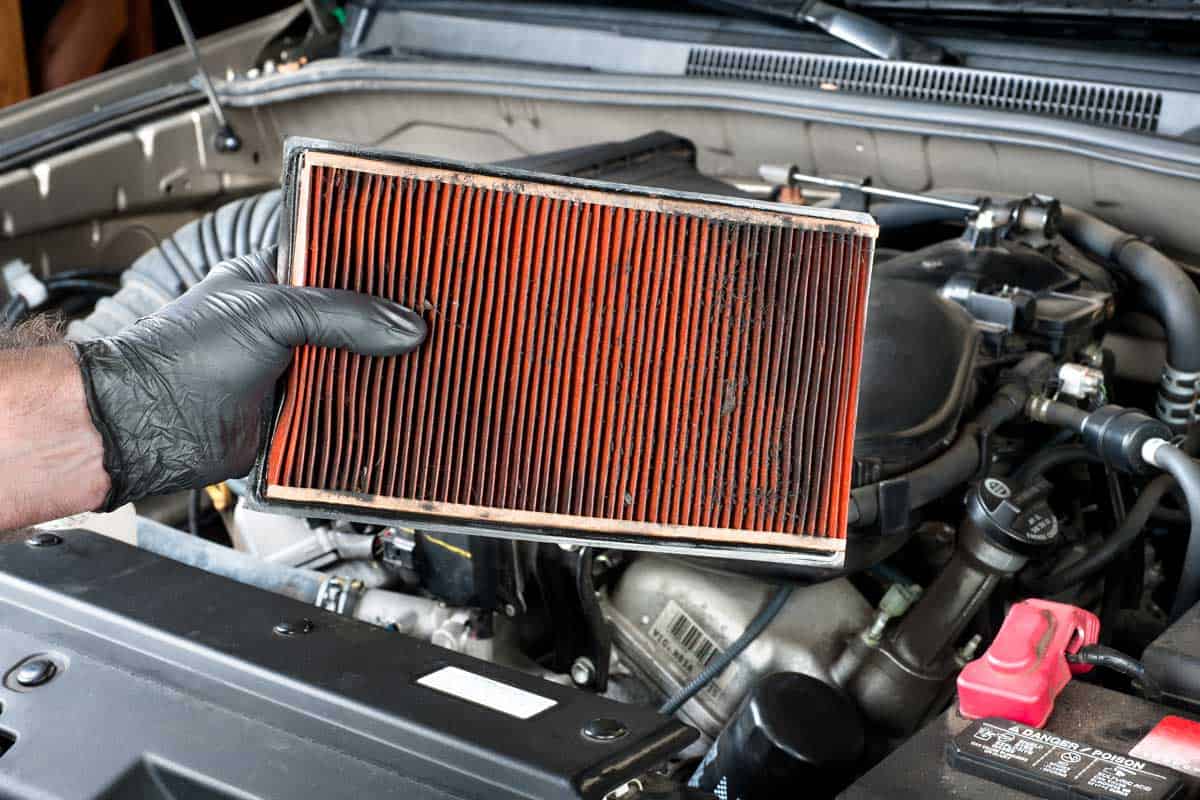 Even if you're not particularly knowledgeable about cars and their mechanical parts, you've likely heard of the engine air filter. Perhaps the mechanic at the oil change shop recommended an air filter change in addition to your vehicle's other routine maintenance. A vehicle's engine air filter does just what its name implies — it filters the air that enters the engine to ensure that only clean air makes it to the combustion chamber. But how often should the air filter be changed?
Even if you're not particularly knowledgeable about cars and their mechanical parts, you've likely heard of the engine air filter. Perhaps the mechanic at the oil change shop recommended an air filter change in addition to your vehicle's other routine maintenance. A vehicle's engine air filter does just what its name implies — it filters the air that enters the engine to ensure that only clean air makes it to the combustion chamber. But how often should the air filter be changed?
Depending on the driving conditions your vehicle is subjected to, you should change the engine air filter every 12,000 to 15,000 miles. If you drive in unusually dusty environments or if your vehicle spends a lot of time idling, you might need to change the air filter sooner.
If you still have some questions about engine air filters, don't worry. In this post, we'll talk about how an engine air filter works, and we'll teach you how to tell when the filter needs to be changed. Just keep reading for more information!
How Does An Engine Air Filter Work?
Any combustion engine relies on two things in order to run smoothly: fuel and air (clean air, that is). The purpose of an engine air filter is to prevent dirt and other debris from entering the combustion chamber via the air intake system. An air filter has a number of pleats that trap large pieces of debris, only allowing clean air to pass into the engine to facilitate combustion.
Though a somewhat strange comparison, an engine air filter can be compared to nose hairs in that both exist to filter out harmful particulates and thus prevent them from entering a sensative area that requires clean air and causing serious damage. An engine air filter prevents particulates from entering the combustion chamber in the same way nose hairs prevent particulates from entering the lungs.
How Do I Know If The Engine Air Filter Needs Changing?

Luckily, there are several ways to determine whether or not the engine air filter needs to be changed. We'll talk about these indicators more below, along with a foolproof way to check how dirty the filter is.
Decrease In Fuel Economy
One of the clearest indicators that your engine air filter needs to be replaced is a sudden decrease in overall fuel economy. When the air filter gets dirty, the engine has to work harder to suck in the clean air it needs to run smoothly, resulting in a noticeable decrease in efficiency. The decrease in fuel economy will be gradual at first, but as the filter gets dirtier, fuel economy will really start to plummet.
We recommend closely monitoring your vehicle's fuel economy at all times, as a sudden decrease in fuel economy can also be an indicator of a host of other problems.
Ignition Trouble
If your vehicle is slow to turn over (or if it fails to turn over at all), a dirty engine air filter might be the culprit. A dirty filter adversely affects the vehicle's entire emission control system which can cause gunk to build on the spark plugs, resulting in a strained ignition. If your vehicle struggles to turn over, you should start by visually inspecting the filter, which we'll talk about next.
Dirty Appearance
Luckily, checking the condition of the engine air filter is typically very simple. Just pop the hood, locate the engine air filter housing, and pop it open. Lift the top off the housing, and you'll be able to remove the air filter from the housing.
Visually inspect the air intake side of the air filter (this is the side that doesn't run to the engine — you can determine which side faces the engine by simply following the air intake system to see which side connects to the engine). If your vehicle has a circular air filter, the outside will be the dirty side. If there is a significant amount of debris buildup, you should change out the air filter.
This photo shows the difference between a brand new air filter and one that has seen better days -
This video will visually walk you through the process of checking the engine air filter -
What Happens If You Don't Change The Engine Air Filter?
As we've mentioned, the primary consequence of not changing a dirty air filter is a drastic decrease in fuel economy. The engine will run "rich," which means it will use more and more fuel as the airflow diminishes. This will also lead to a loss of power. Continuing to use a dirty air filter will also foul the spark plugs like we mentioned earlier.
Can I Drive Without An Engine Air Filter?
![Why Is Driving so Hard? [and 7 Ways to Make It Easier]](https://vehq.com/wp-content/uploads/2019/12/driving-at-morning.jpg)
It's unwise to drive a vehicle without an engine air filter. Without an air filter inside the housing, any debris in the air — dirt, dust, or sand — will get sucked into the combustion chamber and cause serious damage. It's better to drive with a dirty air filter than none at all; even the dirtiest of air filters will prevent harmful debris from being sucked into the engine.
What Is A Reusable Engine Air Filter?
In your search for information about engine air filters, you'll likely come across reusable filters. What exactly are these? Can you just reuse any kind of engine air filter? Not exactly.
Reusable air filters are designed to be cleaned, oiled, and reused time and time again, so they don't need to be replaced in the same sense that conventional air filters do. They are made out of durable materials that can last for a very long time if they are maintained properly.
How To Clean And Oil A Reusable Engine Air Filter
K&N is widely known for its outstanding reusable air filters. Here we'll list the steps to follow to clean and oil a K&N filter:
- Apply the cleaner. Spray the K&N Air Filter Cleaner onto both sides of the filter and let it sit for 10 minutes to loosen the debris. Be sure not to let the cleaner dry on the filter.
- Rinse the filter. Rinse the filter off with cool, low-pressure water from the clean side (the water should run from the clean side and out through the dirty side). This will expel dirt and debris. Continue to rinse the filter until all visible debris has been flushed out of the pleats on the dirty side.
- Dry the filter. Gently shake any excess water off the filter, and let it dry naturally. This could take some time. Periodically shake the filter — if water comes off, it needs more time to dry.
- Oil the filter. Apply K&N Air Filter Oil evenly along the crown (tip) of each pleat on the air intake side of the filter. Set the filter down flat with the air intake side facing up for 20 minutes to allow the oil to wick.
And that's all there is to it. Simply place the filter back in the housing, and you'll be good to go for 12,000 to 15,000 miles.
K&N Engine Air Filter Maintenance Kit
Click here to see more on Amazon.
For a visual walkthrough of the cleaning process, check out this video -
In Closing
We hope this guide has helped you better understand how an engine air filter works and how often to replace it. Failing to replace the air filter (or clean it in the case of a reusable filter) will hurt your fuel economy and put more strain on the engine.
Before you go, be sure to check out these other automotive guides -
How Often Should You Wash Your Car?

